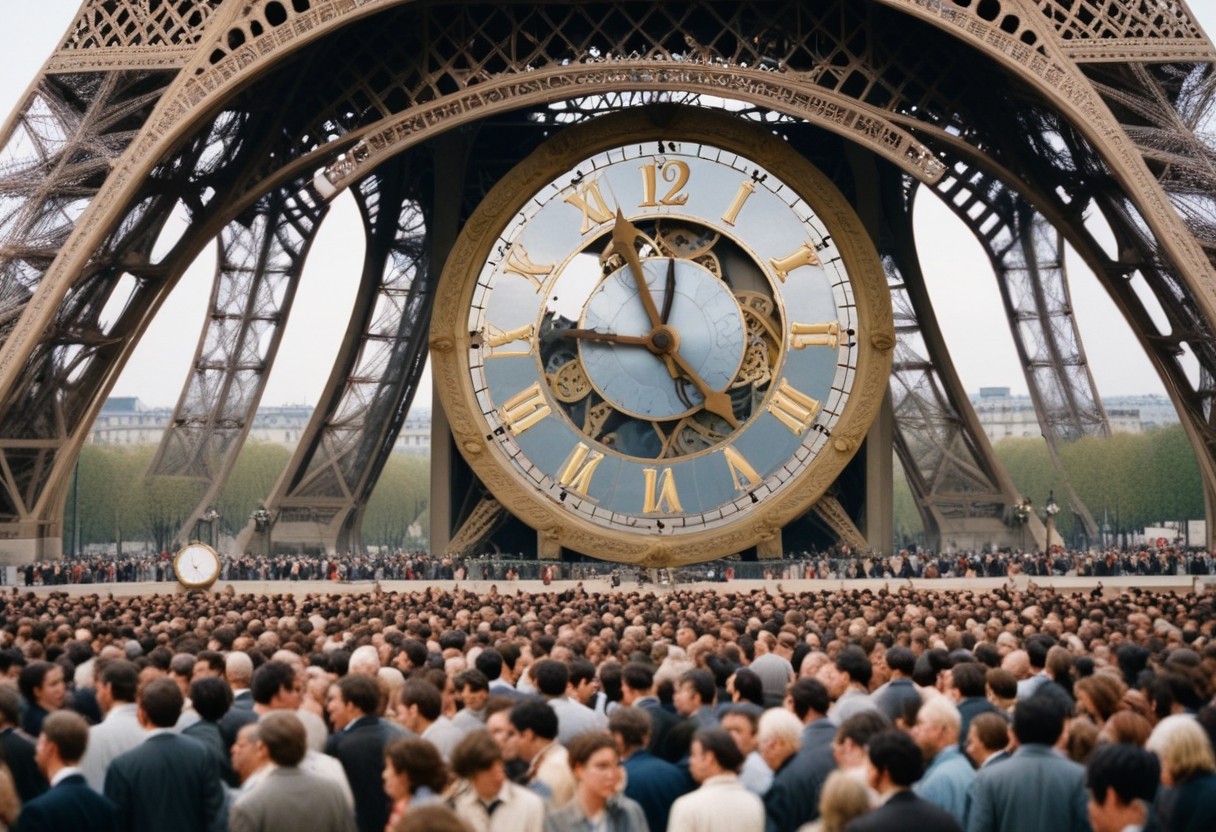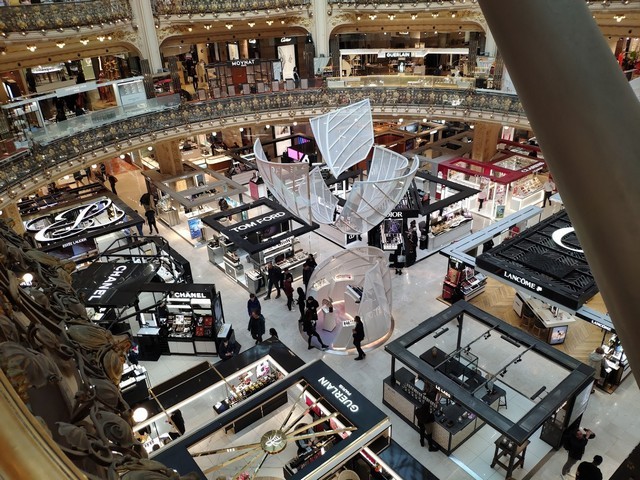What Is the Capital of France: History, Facts, Best Places to See
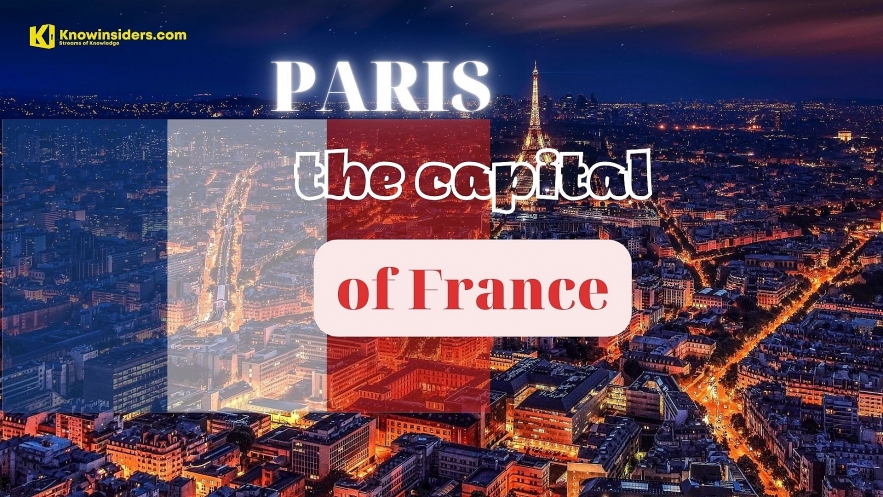 |
| What Is The Capital of France: History, Facts, Best Places to See. Photo: knowinsiders. |
What is the Capital of France?
Paris wears its history on its sleeve. Its countless celebrated landmarks – from the white domes of Sacré-Cœur to the imposing black edifice of the Tour de Montparnasse – provide vivid reminders of the different eras and rulers who have left their marks.
Paris is undeniably one of the most beautiful cities in the world and the most visited receiving over 30 million visitors every year.
How much do you know about Paris? Let’s start with the basics, including history, best places to go and frequently asked questions and facts about the capital of France.
*****
History of Paris
The history of Paris dates back to its foundation by the Parisii. Throughout the centuries, Paris has witnessed countless riots and revolutions.
According to introducingparris.com, the history of Paris dates back to approximately 259 BC, with the Parisii, a Celtic tribe settled on the banks of the Seine. In 52 BC, the fishermen village was conquered by the Romans, founding a Gallo-Roman town called Lutetia.
The city changed its name to Paris during the fourth century. During this period, the city was threatened by Attila the Hun and his army, and according to the legend, the inhabitants of Paris resisted the attacks thanks to the providential intervention of Saint Geneviève (patron saint of the city).
In 508 the first king of the Franks, Clovis I, made Paris the capital of his empire. In 987, the Capetian dynasty came to power until 1328.
| Who was the first king of France? Clovis I (c. AD 466-511) was the first king of France. He united several of the Frankish tribes living in territories that now form part of modern-day France, doing away with the system of local chieftains and bringing them together under a single ruler. He established a dynasty that became known as the Merovingians, with the kingship passed down his line of succession for over 200 years. Widely recognised as a clever military tactician, he took control of a small rump state in what had been the Western Roman province of Gaul, in northern France, in 486. From there, his territories quickly expanded, and he made Paris his capital city in 508. |
During the eleventh century, Paris gradually became more prosper thanks to its trade in silver and because it was a strategic route for pilgrims and traders.
At the beginning of the twelfth century, the first university in France was founded thanks to the uprisings of students and professors. Louis IX appointed the chaplain, Robert de Sorbon, to establish the College, which was later named after him, the Sorbonne.
Three insurrections took place during the fourteenth century in Paris: the first, in 1358, when Étienne Marcel led a merchant revolt. The second was a tax riot known as the Maillot uprising in 1382, and the third was the Cabochien revolt in 1413. These riots were part of the Hundred Years’ War.
 |
| The Parisii established themselves on the Île de la Cité (pictured in 1920) around 250 BC. Photo 12 / Alamy Stock Photo |
Additionally, the capital of France, which was the most populated city in Europe in 1328, was struck by the Bubonic plague, killing thousands of Parisians. Following the Hundred Years’ War, Paris was devastated and Joan of Arc was unable to keep the British from taking Paris. In 1431, Henry VI of England was crowned King of France and the English did not leave until 1436.
The city kept on growing during the following centuries, although monarchs preferred to live in the Loire Valley. In 1528, King Francis I returned the royal residence to Paris and the city became the largest in Western Europe.
On 24 August, 1572, the royal council decided to assassinate the leaders of the Protestants (Hugonotes), which lead to Catholic mobs butchering protestants in Paris. Known as St. Bartholomew’s Day Massacre, it spread from Paris to the rest of the country during the following months.
Margaret of Valois, sister of King Charles IX, married Henri of Navarre (Head of the Huguenots dynasty) that same year, while Henry III tried to find a solution to the conflicts between the Catholics and Protestants. However, in 1588, the French Catholics forced Henry III to flee on the so-called Day of the Barricades and killed him a year later. He was succeeded by Henry of Navarre, becoming King Henry IV. A decade later, Henry IV decided to convert to Catholicism and was crowned King of France in 1594.
In 1648, the second Day of the Barricades took place when the Parisians opposed the King due to the deplorable level of poverty. This was the beginning of a long uprising called the Fronde parlementaire, a serie of civil wars that took place in France between 1648 and 1662. Fifteen years later, King Louis XVI moved the royal residence to Versailles.
| History of Population in Paris After World War I, the population of Paris first reached 3 million inhabitants. The war was over, and many people were moving to the city in order to have access to merchants and various goods that were hard to find elsewhere in the country. The city began to bustle shortly after the war and was one of the first parts of France that began to recuperate. For the rest of the 20th century, the population began to decline slightly, and by the 1960s, it fell dramatically to 2.2 million people, as worldpopulationreview reported. During this time period, other large cities around the world including London and New York City also saw a major decrease in their populations. At the beginning of the 21st century, France's population began to rise again, and between 1999 and 2009, there was a consistent growth of approximately 100,000 people per year. This is due to the large amount of people aged 18-40 living in the area that had children. |
According to discoverfrance, the storming of the Bastille in 1789 was the first of a series of key actions by the Parisian people during the FRENCH REVOLUTION. Paris also played a major role in the revolutions of 1830 and 1848. In 1871, during the FRANCO-PRUSSIAN WAR , the city was besieged for four months until France surrendered. After German troops withdrew, French radicals briefly established the COMMUNE OF PARIS. During World War I the Germans were prevented from reaching Paris, but they occupied the city during World War II from 1940 to 1944. Paris was again the scene of violence during the student riots of 1968.
Paris today maintains its importance, character, and charm, though its appearance is being transformed by structures such as the BEAUBOURG and by the ambitious grands projets building program carried out under the presidency of François Mitterrand. In addition to the La Défense arch and the Bastille Opéra, Mitterrand's projects have included the renovation of the Louvre by architect I. M. Pei, the La Villette complex on the northeastern edge of the city, and, in the southeast, the Bibliothèque de France, a great computer-age library.
Planning for Paris and the Paris Basin region includes consideration of large land areas in the Seine River valley all the way to the mouth of the river. New towns, parks, industrial locations, and expanded functions of existing towns are contemplated for this corridor on both sides of the Seine.
Best Places to See in Paris
A trip to the capital wouldn't be complete without seeing the following attractions:
Eiffel Tower
What would Paris be without its symbolic Eiffel Tower? Built by Gustave Eiffel to commemorate the centenary of the French Revolution, it is presented at the Exposition Universelle in Paris in 1889. 324 meters high, it is one of the most visited monuments in the world with nearly 7 million visitors a year.
According to cometoparis.com, the first floor houses the Eiffel Tower 58 which extends over two levels, 58 meters above the ground as its name suggests. On the second floor, the view is the best at 115 meters because you have a diving view on the ground below. Finally on the 3rd floor at 275 meters, you can see what the office of Gustave Eiffel was. For the more adventurous one, it is possible to use the stairs and climb the steps (1,665 to the summit).
The ascent of the Eiffel Tower is a must to enjoy the magnificent view of Paris.
| Don’t miss: A fabulous view of Paris from the transparent new first floor and second floor, Eiffel Tower Shops for souvenirs, and exotic dine and wine at Le 58 tour Eiffel and Le Jules Verne Opening hours: Mid June to early September: 9 am to 12 midnight and Rest of the year: 9:30 am to 11:30 pm Entry fee: Entry Fee to Eiffel tower for kids below 4 years is free. Rest of rates are as follows: Lift Entrance upto 2nd Floor – INR 861 (€11,00) for adults, €8,50 for children (12-24) years, €4,00 for children ( 4-11) years, differently abled and French job seekers Lift Entrance upto Top Floor – €17,00 for adults, €14,50 for children (12-24) years, €8,00 for children ( 4-11) years, differently abled and French job seekers Stair Entrance upto 2nd Floor – €7,00 for adults, €50 for children (12-24) years, €3,00 for children ( 4-11) years, differently abled and French job seekers |
Notre Dame Cathedral
Notre Dame is a famous and beautiful Roman Catholic cathedral – one of the top places to visit in Paris. The Gothic style architecture, the amazing sculptures and gargoyles fascinate every traveler. Its beauty lies in its ruins and domed roof. f you want to witness the beautiful architecture in Paris then this the place to be. The place has a unique charm to itself which is simply hard to ignore. No wonder the place is treated as one of the most visited places in Paris, as traveltriangle.com reported.
Local guides reminisce and impart tales about different points of interests. Small shops and eateries in the neighborhood see heavy inflow of tourists, just because of traveler’s piqued interest in the Cathedral. The place has a lot to offer so make sure that you are ready for a great experience at the Notre Dame Cathedral in Paris.
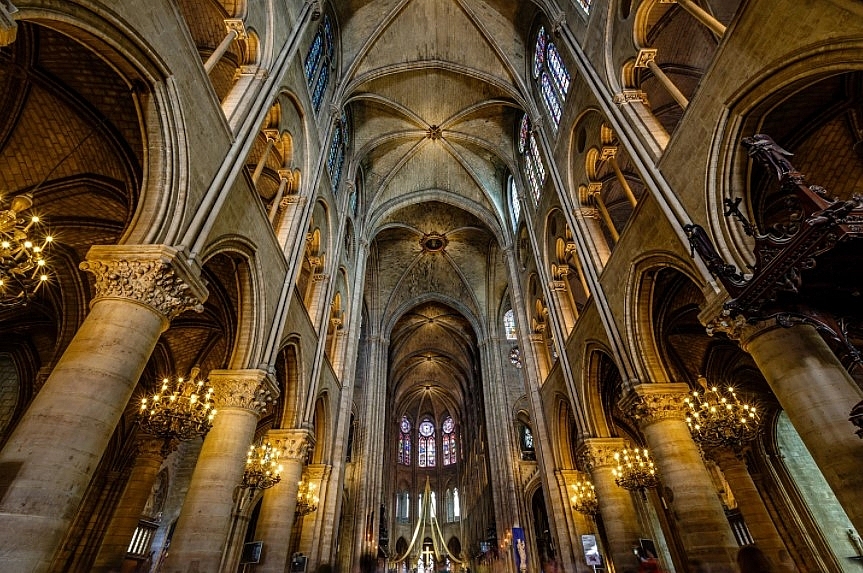 |
| Notre-Dame de Paris dates to the mid-12th century | © Andrey Omelyanchuk / Alamy Stock Photo |
Don’t miss: Superb architecture and wood carvings of internal décor, ‘Parvis de Notre Dame’- the front court and statute of Bas Relief and Jeanne D’Arc (Joan of Arc)
Opening hours: 8 am to 6:45 pm
Entry fee: None
Louvre Museum
The biggest museum in Paris, and home of the Mona Lisa, The Raft of the Medusa, and Venus de Milo was, first and foremost, the jewel in the crown of the kings, emperors and republics of France. From the sombre late-12th century fortress, to Peï’s glass pyramid, built in 1989, many have reigned here and practically everyone has left their mark – Renaissance, Classic, First and Second Empire, contemporary… The Louvre, as parisinfo reported, a museum since 1793, houses collections of Western art from the Middle Ages to 1848, and collections of ancient oriental, Egyptian, Greek, Etruscan and Roman civilisations which preceded and influenced them, as well as graphic arts and Islamic arts.
Avenue des Champs-Élysées
According to planetware, the most monumental boulevard in Paris used to be a desolate field of marshland until the 17th century, when it was landscaped by André Le Nôtre. A century later, the Parisian city planner Baron Haussman designed the boulevard's elegant buildings. The Champs-Elysées is divided into two parts with the Rond-Point des Champs-Elysées as its intersection.
The lower part of the Champs-Elysées, bordering the Place du Concorde, includes a spacious park, the Jardin des Champs-Élysées, and the Petit Palais fine arts museum. The upper part, extending to the Arc de Triomphe, is lined by luxury shops, hotels, restaurants, cafés, cinemas, and theaters. This bustling area draws many tourists and is a gathering place for Parisians.
The Champs-Elysées is famous for its prestigious establishments, such as Maison Ladurée (75 Avenue des Champs-Elysées), a pâtisserie shop renowned for its 18th-century tea salon and delicious pastries (their specialty is "macarons"), and upscale designer boutiques like Tiffany & Co. (62 Avenue des Champs-Élysées), Louis-Vuitton (101 Avenue des Champs-Elysées), and Cartier (154 Avenue des Champs-Élysées).
Address: Champs-Elysées, 75008 Paris (Métro: Champs-Élysées Clemenceau station to visit the Jardin des Champs-Élysées and Petit Palais, Franklin d. Roosevelt station for Laduree, George V station for the main shopping area).
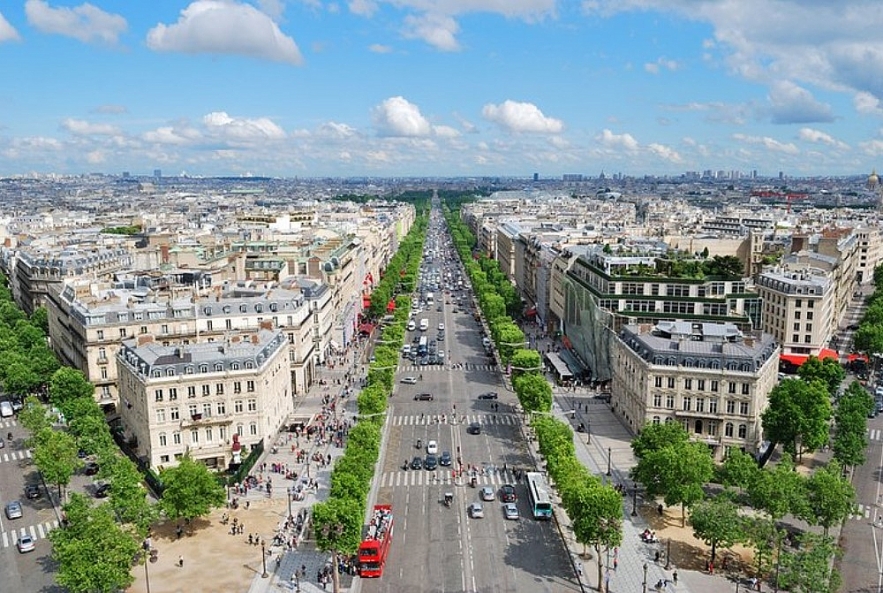 |
| Avenue des Champs-Élysées. Photo: planetware. |
| Why is Paris called the ‘The City of Light’? Paris is often referred to as ‘The City of Light’, and not just because it was one of the first European cities to install widespread gas-powered lighting. It was also the centre of the European Enlightenment in the mid-18th century – a period that was marked by an explosion of new, revolutionary ideas concerning people’s relationships to the world around them, to God and to the state. It was an era in which philosophers, writers and thinkers emphasised the primacy of logic and science over religion. They questioned the idea of the absolute monarchy and the divine right of kings and promoted notions of individual liberty and ideals such as freedom of speech. Led by French thinkers such as Denis Diderot and Voltaire, as well as the Swiss-born Jean-Jacques Rousseau, this movement covered everything from arts and sciences to economics but mostly concerned itself with politics. Ideas that emerged during this ‘enlightened’ period provided much of the intellectual underpinning for the French Revolution as well as the foundation of the United States. |
Montmartre
According to cometoparis,com, Montmartre is a hill located in the north of Paris, 130 meters high, having its name to the surrounding neighborhood. It is best known for the white-domed Basilica of the Sacred Heart, at the top. It was completed in 1919 and honors the French victims of the Franco-Prussian war of 1870.
If you're in the area, do visit the Square of Tertre, few blocks from the Basilica. There are many artists setting up their easels to paint tourists or exhibit their work. Place du Tertre is a reminder of the time when Montmartre was the hub of modern art in the early 20th century; many artists such as Amedeo Modigliani, Claude Monet, Pablo Picasso and Vincent van Gogh worked there. The Espace Salvador Dalí, a museum dedicated primarily to sculpture and drawings of the Spanish painter, can be found a few steps from the Square of Tertre.
Palace Of Versailles
Built as an emblem of French Supremacy, Palace of Versailles is one of the most popular world heritage and cool places to visit in Paris. This gigantic and awesome structure boasts of landscaped gardens, exotic décor, amazing terrace and charming display of artwork of the Renaissance era. This amazing place as listed as a World Heritage Site for 30 years. This is also considered to be one of the greatest achievements of the 17th French art. The palace today contains over 2,300 rooms each of which is designed in a unique way. The magnificence of the palace is truly hard to ignore, as traveltriangle reported.
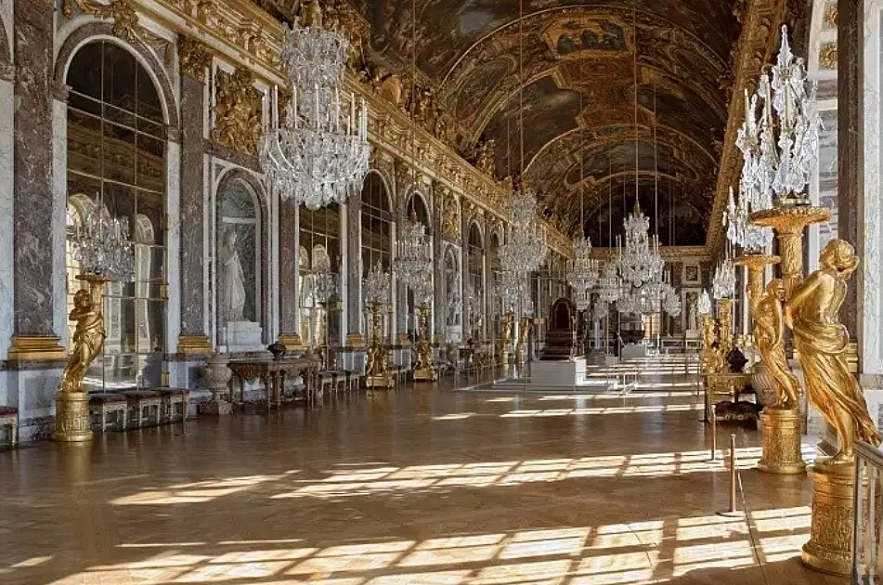 |
| Image Credit: Myrabella for wikipedia |
Palais Garnier, Opéra National de Paris
Commissioned by Napoleon III in 1860, the Palais Garnier Opera House was designed by Charles Garnier in an exuberant Baroque style. Garnier worked tirelessly on the project for over a decade, from 1862 to 1875. Today, the opulent monument is a symbol of Napoleon's Imperial regime.
The facade features classical columns and eight sculptures representing allegorical figures: Poetry, Music, Idyll, Recitation, Song, Drama, and Dance. The loggia depicts busts of composers, including Rossini, Beethoven, and Mozart, while the cupola is topped with a statue of Apollo with allegorical figures of Poetry and Music.
Upon entering the building, visitors are dazzled by the lavish 11,000-square-meter interior. Most of the building's space is dedicated to the grand foyer with its fabulous Grand Escalier, marble entrance staircase, adorned by ornate gilded lamps.
Disneyland Paris
Fans of Mickey can visit Disneyland Paris which is located 32 km from central Paris, with a connection to the suburban RER A.
Disneyland Paris has two theme parks: Disneyland (with Sleeping Beauty's castle) and Walt Disney Studios. Top attractions are Space Mountain, It's a Small World and Big Thunder Mountain.
Jardin du Luxembourg
According to planetware, the Jardin du Luxembourg is the best known park in Paris after the Tuileries. The Luxembourg Gardens were laid out in the 17th century, when the Palais du Luxembourg was built, but they were given their present form in the 19th century by the architect Jean François Chalgrin.
The central feature of the 25-hectare park is the large octagonal fountain-adorned pool, which is flanked by two terraces lined with statues, tidy flower beds, and perfectly manicured shrubbery. This part of the park exemplifies French classical style. Facing the fountain are many chairs spread about for visitors to use.
There is also an English-style garden, a rose garden, apiary, orangery, and greenhouses filled with exotic orchids, as well as an orchard where heirloom varieties of apples flourish.
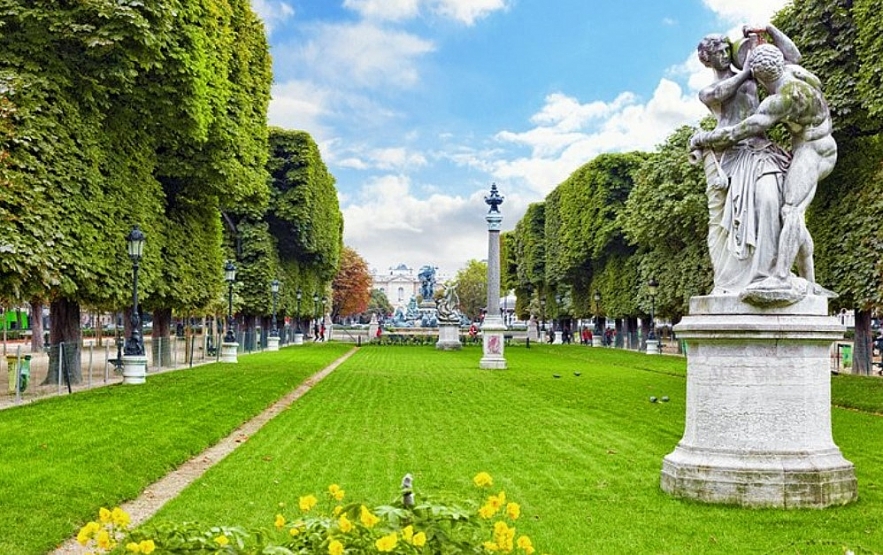 |
| Jardin du Luxembourg. Photo: planetware. |
Interesting Facts about Paris
The Louvre Is Big…Very Big
According to evanevanstours, with over nine million visitors annually, the Louvre Museum is the most popular museum on the planet. It’s famously home to the Mona Lisa, but over 35,000 pieces of art are on display. But in the museum’s entire collection, there are over 460,000. Allocate just 30 seconds of viewing time to each, and you’d still need 35 days to see them all.
Paris Has One Of The Most Famous Paintings In The World
The Louvre Museum in Paris houses the most prestigious and most famous painting in the world, the Monalisa by Leonardo da Vinci.
Even though the painting is popular, so many people are always surprised by how small it is when they see it in real life — it is 77 cm x 53 cm to be exact.
The Eiffel Tower Shouldn’t Be There
Believe it or not, Paris’s most iconic building was only meant to be a temporary monument. It was France’s way of demonstrating its superior technological and construction skills. When it was constructed in 1889, it was extremely unpopular. Residents and senior figures protested against it, and the media called it a ‘useless monstrosity’.
It’s Full of Ghostly Metro Stations
With around 400 stations, it’s no surprise that Paris’s metro network has a few secrets. One of those is that at least 14 of them are either ‘never used’, ‘abandoned’ or ‘no longer in use’. The Porte des Lilas station is rented out as a film set by production companies.
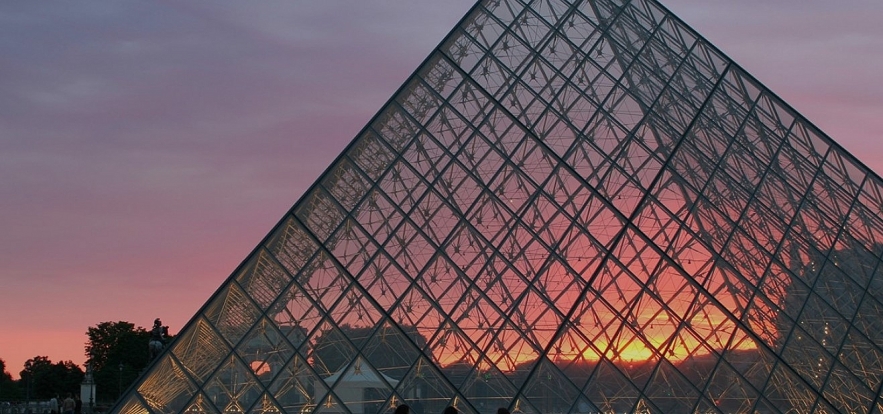 |
| Photo: worldstrides.com |
Paris Has An Underground City
As dreaminparis.com reported, Paris is undeniably a beautiful city but it also has darkness beneath its walls — a full city of darkness commonly known as the Paris underground city. This city is called “The Catacombs”.
Even though today the Catacombs are one of the places to visit in Paris to learn more about the city’s history, it’s still a dark place that holds over 6 million remains of Parisians.
The Very First “Bloody Mary” Was Made In Paris
One of the fun facts about Paris is that the famous cocktail, Bloody Mary was first made in the French Capital. Though there are a number of legends about who truly first created Bloody Mary as a number of people have claimed that honor, what is clear is that this classic cocktail that is enjoyed by a number of people originated from Paris.
Paris Has 450 Parks And Gardens
Paris is the heart of picnics and this could be thanks to the 450 parks and gardens spread across the city. Though they’re many, the most famous ones are the Tuileries Garden and the Luxembourg Garden.
This means that whichever part of the city you’re in, you can always chill in the park or take your loved ones for a Parisian picnic.
New Bridge Is…the Oldest Bridge
Pont Neuf (New Bridge) is now the oldest standing bridge in the French capital. But at the time of its construction, it was one of the first stone bridges with pedestrian sidewalks. Consequently, it was named New Bridge. All other bridges from its era are no longer standing.
Love-locks Bridge is No Longer
As amazing as it was, the ‘love-locks bridge’ (Pont des Arts) no longer exists! The 1 million locks weighed over 45 tonnes and had to be removed to prevent structural damage. The bridge has been redecorated with modern, art-deco designs. Still a pretty sight, but know what you should expect if planning to visit.
| Frequently Asked Questions about Paris Where does the name Paris come from? The Parisii were a sub-tribe of the Celtic Senones, and they established themselves on the Île de la Cité, one of the remaining natural islands along the Seine, in the years between 250 and 225 BC. In 52 BC, the Roman army defeated the Parisii and established a Gallo-Roman city that they initially called Lutetia. By the time the Western Roman Empire fell in AD 476, however, the city was more commonly referred to as Parisius, a name that became Paris when translated from Latin to French. When did Notre-Dame catch fire? On 15 April 2019, while undergoing restoration work, Notre-Dame caught fire. According to the culturetrip, much of the cathedral’s roof was destroyed, and the spire, or flèche, collapsed completely in dramatic images beamed around the world. In the immediate aftermath, French President Emmanuel Macron pledged to restore the cathedral to its former glory. Donations flooded in from both France and around the world to help with the reconstruction work. Do Europeans need their passports to enter France? Citizens of European Union Member States need a valid identity document (ID card or passport). Generally, the documents required to enter France are the same as usual. What's the best food in Paris? There are many to taste, foie gras, oysters, all kinds of desserts. There are also fine wines. What is the best season to visit Paris? The climate in Paris is mild in all seasons. When traveling, the weather is a relatively unimportant factor. Summer will not exceed 25 ° C, the minimum temperature in winter is usually above 0 ° C, the average annual precipitation distribution, at least 1/3 of the day need to carry rain gear. Visitors can choose travel time according to different local themes. |
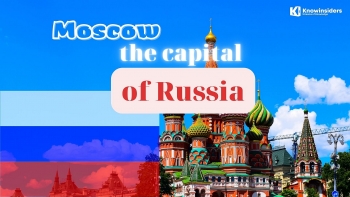 What Is The Capital of Russia: History, Facts, Best Places to See What Is The Capital of Russia: History, Facts, Best Places to See A fascinating city to wander around, stunning cathedrals, churches, and palaces lie side-by-side with bleak grey monuments and remains from the Soviet state. We rounded ... |
 What Is the Capital of China: History, Facts and Best Places to See What Is the Capital of China: History, Facts and Best Places to See Beijing is the capital city of China and is known for its rich history and modern architecture. We rounded up all things you need to ... |
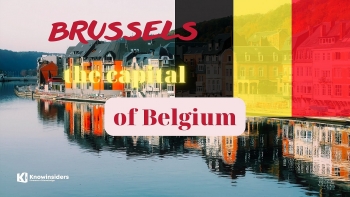 What Is The Capital of Belgium: History, Facts, Best Places to See What Is The Capital of Belgium: History, Facts, Best Places to See The capital of Belgium has a rich history and plays an important role in Europe, and the world. We rounded up all things you need ... |

